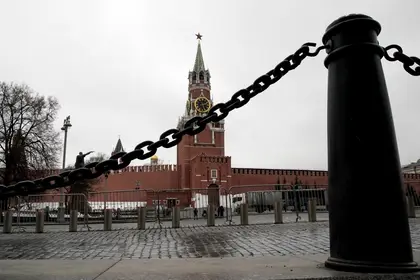Key Takeaways
- Russian forces made marginal gains around Bakhmut on November 29, but Russian forces remain unlikely to have advanced at the tempo that Russian sources claimed.
- The United Kingdom Ministry of Defense (MoD) reported that Russian forces have likely stopped deploying battalion tactical groups (BTGs) in the past three months, supporting ISW’s prior assessments.
- Russian forces continued to defend against Ukrainian counteroffensive operations around Svatove as Ukrainian forces continued counteroffensive operations around Svatove and Kreminna.
- Russian forces continued limited ground attacks west of Kreminna to regain lost positions.
- Russian forces conducted ground attacks near Siversk and Avdiivka, and in western Donetsk Oblast.
- Russian forces continued strengthening defensive positions in eastern Kherson Oblast as Ukrainian forces continued striking Russian force concentrations in southern Ukraine.
- Russian forces continued to struggle with outdated equipment and domestic personnel shortages amid official actions indicative of a probable second wave of mobilization.
- An independent investigation found that Russia may have transported thousands of Ukrainian prisoners from penal colonies in occupied Ukraine to Russia following the withdrawal from the west bank of Kherson Oblast.
Russian forces made marginal gains around Bakhmut on November 29, but Russian forces remain unlikely to have advanced at the tempo that Russian sources claimed. Geolocated footage shows that Russian forces made marginal advances southeast of Bakhmut but ISW remains unable to confirm most other claimed gains around Bakhmut made since November 27.[1] Some Russian milbloggers made unsubstantiated claims that Russian forces broke through the Ukrainian defensive line south of Bakhmut along the T0513 highway to advance towards Chasiv Yar, which would cut one of two remaining main Ukrainian ground lines of communication (GLOCs) to Bakhmut, but such claims are likely part of a continuing Russian information operation and are premature, as ISW has previously assessed.[2] ISW continues to assess that the degraded Russian forces around Bakhmut are unlikely to place Bakhmut under threat of imminent encirclement rapidly.[3]
The United Kingdom Ministry of Defense (MoD) reported on November 29 that Russian forces have likely stopped deploying battalion tactical groups (BTGs) in the past three months.[4] The UK MoD stated that the BTGs‘ relatively low allocation of infantry, decentralized distribution of artillery, and the limited independence of BTG decision-making hindered their success in Ukraine.[5] ISW assessed starting in April that Russian BTGs were degraded in various failed or culminated Russian offensives, including the attacks on Kyiv, Mariupol, Severodonetsk, and Lysychansk, and later efforts to reconstitute these BTGs to restore their combat power have failed.[6] Russian forces have likely since thrown their remaining combat power and new personnel, including mobilized personnel, into poorly trained, equipped, and organized ad hoc structures with low morale and discipline.[7] The structure of BTGs and the way the Russian military formed them by breaking up doctrinal battalions, regiments, and brigades likely deprived the Russians of the ability to revert to doctrinal organizations, as ISW has previously assessed, so that the Russians must now rely on ad-hoc structures with mobilized personnel.[8]

Kyiv Hit by Massive Drone Attack as Russian Strikes Target Multiple Ukrainian Cities
See the full report here.
You can also highlight the text and press Ctrl + Enter






